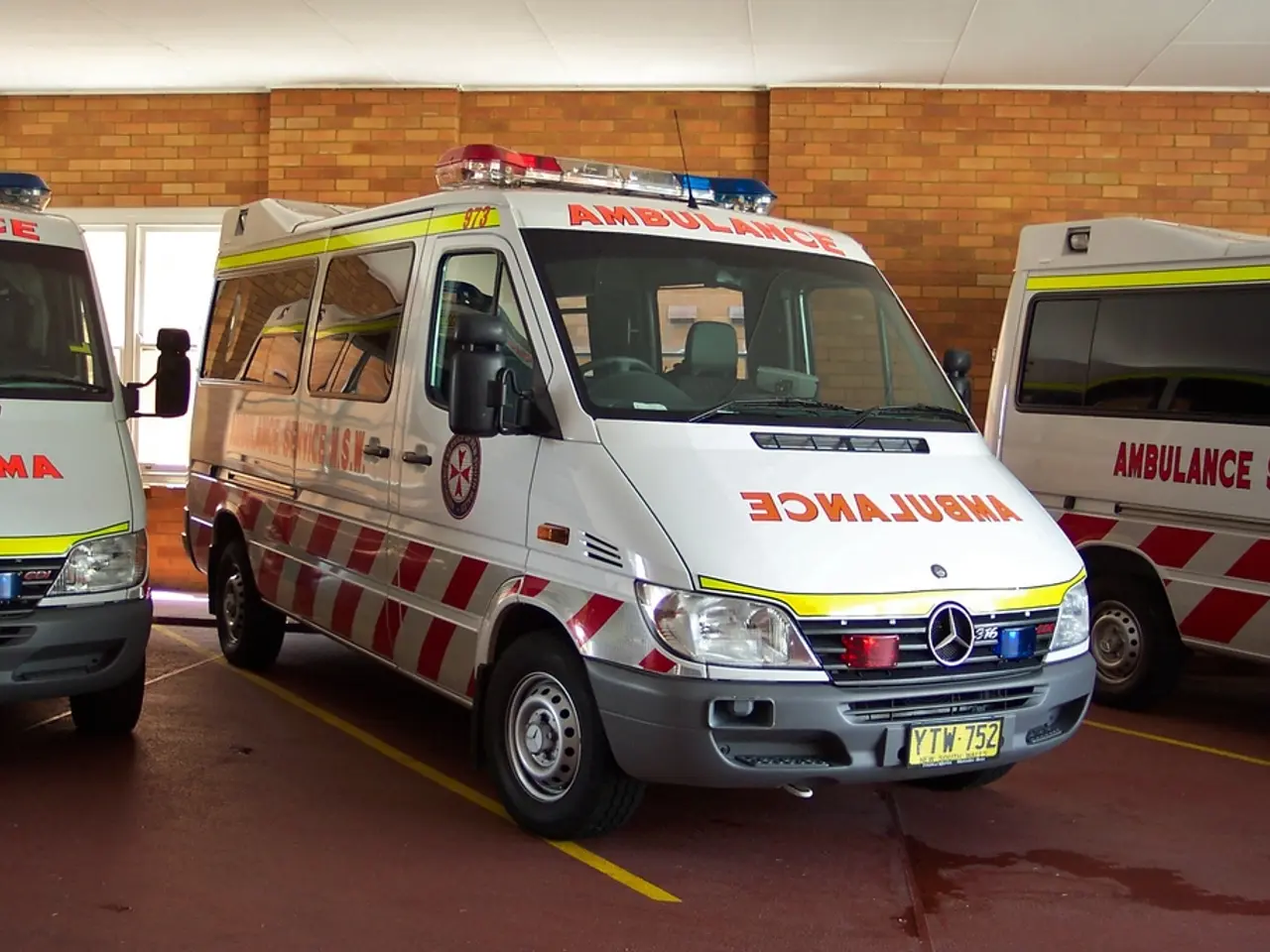Emergency vehicle arrives thirty minutes late while man transports father to hospital
In a shocking turn of events, a 43-year-old man lost his life in 2021 after suffering a deep cut to an artery in his arm while working on a building site. The incident, which occurred in New Zealand, has sparked a series of investigations and criticisms, highlighting a gap in the knowledge and response across the emergency services system.
The tragedy unfolded when the man was loading glass and timber into a bin on the site. He sustained a severe injury, and his son, in a desperate attempt to save his father, called the ambulance service at 3.39pm. However, the response was slow, with the dispatcher lacking crucial information about the situation.
In a twist of events, a second ambulance was dispatched to a less urgent incident before one was finally sent to the work site. The delayed response meant that the ambulance arrived at 4:32pm, over 30 minutes after the man was already in the hospital. By this time, it was too late to save him, and he died later that day.
The Health and Disability Commissioner, Morag McDowell, has criticised St John for multiple failings in relation to the incident. The commissioner noted a gap in the knowledge across the system, as neither operator escalated the call to a clinical advisor for medical advice. The report did not assess whether the man would have survived if an ambulance had arrived on time.
St John's internal review into the incident was criticised as inconsistent and not reliable as evidence when assessing the care provided to the man. However, the organisation has taken steps to rectify the situation. They have made changes to ensure high-priority incidents are routinely reviewed and escalated to clinicians where appropriate, and to reduce errors.
The son provided advice to try to stem the bleeding while on the call with the ambulance service. Despite his efforts, the software used in the St John call centre classified the incident as serious but not immediately life-threatening, which meant it did not meet the criteria for immediate dispatch of an ambulance.
In a heart-wrenching moment, the son got angry and hung up after being told an ambulance was still 15 minutes away. In a bid to save his father, he was forced to drive him to the hospital in a work van.
Hato Hone St John's acting head of clinical governance, Cheryl des Landes, accepted the findings and welcomed the commissioner's recommendations. St John has apologised to the man's family for the errors in call-handling, which the commissioner considered an organisational failing for which St John is responsible.
Such incidents serve as a stark reminder of the importance of swift and effective emergency response. They also underscore the emotional burden borne by families during such traumatic times, with children or young adults often finding themselves in the role of caregivers.
These stories can be found in memoirs, eyewitness accounts, war literature, or films about the Vietnam War. However, they are often not specifically attributed to a particular city or town, as they symbolically represent the suffering of many people during such conflicts.
In this case, the story stands as a symbol for the plight of many families in Vietnam during the war. While the specific city or town is not named, the story serves as a poignant reminder of the human cost of war and the importance of swift and effective emergency response systems.
Read also:
- GAC Aion stepping up recruitment efforts in anticipation for global market expansion in China
- Top-Notch Books for Business Motivation: A Compulsory Reading List for Achieving Success
- Exploring Elon Musk's Wealth: Investigating the Billionaire's Monetary Domain
- Annual Gathering of the Savory Institute UK Network






